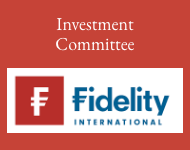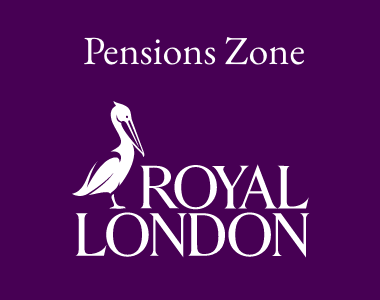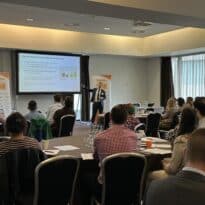As we wait for HMRC’s response to th post Budget consultation, Stephen McPhillips, Technical Sales Director, Dentons Pension Management Limited, considers the potential implications for and impact on SIPP and SSAS members.
Most readers will be very familiar by now with the proposals delivered by the Chancellor of the Exchequer in her Budget speech on 30 October 2024. The resulting consultation, launched by HMRC on the day of the Budget, closed on 22 January 2025 and it is reported that there were over 500 respondents – significantly more than HMRC obtained on the abolition of the Lifetime Allowance. That, in itself, is telling of the importance being placed by the financial services industry on the seismic changes involved in bringing most pensions within scope of Inheritance Tax (IHT).
HMRC Newsletter 166 published on 22 January 2025 indicated:
“We are now reviewing the issues and views expressed in the responses and we will publish both a formal response and draft legislation later in the year.”
Therefore, we will have to wait to see how HMRC has reacted to the consultation responses and what might change in relation to the intended courses of action. In the meantime, how might retirement planning for certain clients be impacted from the perspective of self-invested pensions which, according to a recent FCA market study, account for almost one third of the defined contribution pension market?
A brief reminder of the key proposal
The Chancellor announced that almost all types of pension scheme death benefits will come within the scope of Inheritance Tax (IHT) with effect from 6 April 2027. This is regardless of whether the scheme member died before, on, or after their 75th birthday.
This is a significant change from the current position whereby the value of pension scheme death benefits is generally excluded from the value of a deceased member’s estate when they die, regardless of the age at which they die.
From 6 April 2027, the value of the deceased member’s pension scheme death benefits will be added to the other assets of the person’s estate and, if the combined value of all assets takes the value of the estate above certain thresholds (after allowing for any exemptions which apply), then IHT will become payable. The IHT liability attaching to the pension scheme will need to be met by the pension scheme rather than from other assets of the estate and vice-versa.
However, it is crucial to note that certain pension scheme death benefit payments will not be affected by this change. For example, death benefits paid to a spouse or civil partner, will benefit from the same type of exemptions which apply to the deceased’s wider estate and will not be subject to IHT in relation to the pension scheme death benefits.
What are the implications for SIPP and SSAS members?
Firstly, IHT is a very complex area of financial planning and clients are likely to need professional advice regarding estate planning more than ever as a result of these proposals. That’s good news for the advice profession.
Secondly, it is important to bear in mind that the changes are only effective from 6 April 2027 according to the Budget Statement and supporting documents. Any death benefits payable prior to then will be subject to the current rules.
Thirdly, as noted above, it is also crucial to note that payments of pension scheme death benefits to a spouse or civil partner are exempt from IHT under the proposals.
What if there is no liquidity within my client’s pension scheme with which to pay an IHT bill at the time it’s due?
Given the nature of some types of investment within SIPP and SSAS arrangements (such as commercial properties, loans, unquoted shares and so on), it could be the case that an unexpected death could result in there being no liquid cash (or investments which can easily be sold to create cash) with which to settle any IHT bill immediately.
Importantly, this aspect does not appear to have been considered within the consultation and it is likely that this has been a key item of feedback from various industry representatives.
There may be various options which could apply, depending on a client’s individual circumstances. As an example, it might be possible for the pension scheme to borrow funds in order to settle an IHT bill. Depending on the provider’s proposition, schemes could borrow from a connected party (on demonstrably commercial terms) or from commercial lenders. Alternatively, it may be possible to sell some illiquid assets within the timescale by which IHT needs to be physically paid. Further alternatives might develop between now and the implementation date; time will tell.
In the SSAS world, it may be possible to find liquidity for one member’s death benefit payment (and potential IHT liability) across the overall scheme membership, given that the SSAS is a “common trust fund.”
Example
Let’s assume we have a 5 member SSAS (members A, B, C, D and E) which owns a range of assets such as:
Commercial property – value £160,000
Loan to employer – value £100,000
Platform account – value £450,000
Cash – value £5,000
Let’s also assume that the commercial property has only recently been acquired and is allocated entirely (notionally earmarked) to Member A, as all members have agreed to this unanimously. All of Member A’s £160,000 fund value in the SSAS is tied-up in the commercial property. As a result, Member A’s investment returns will come in the form of rental income from the property and Member A’s fund value will increase or decrease in line with the underlying value of the property.
Unfortunately, Member A dies on or after 6 April 2027.
Firstly, there is very little liquid cash with which to pay death benefits to Member A’s beneficiaries and, in the early stages of ownership of the property, all of Member A’s fund value is represented entirely by bricks and mortar.
Secondly, there might be an IHT liability attaching to the SSAS because of the overall value of Member A’s estate – including his defined contribution pension scheme.
Potential solution
Given the common trust fund nature of the SSAS, and the notional earmarking of assets, it is possible that liquidity could be found within the scheme as follows:
Firstly, the commercial property is valued by a RICS Registered Valuer to confirm that it is worth £160,000.
Next, let’s assume that the platform investment is split equally between Members B, C, D and E. If each agrees to swap £40,000 of platform investment in return for £40,000 of bricks and mortar, the SSAS trustees can then encash units to the value of £160,000 and these liquid funds can be used to pay death benefits and the IHT liability attaching to the pension scheme in respect of Member A.
Members B, C, D and E now each have a notional £40,000 share of the commercial property and will receive their respective shares of the rental income going forward. The property has not been sold by the trustees as part of this process, so there are no conveyancing fees, no Stamp Duty Land Tax (SDLT) (Land and Buildings Transaction Tax (LBTT) in Scotland) considerations and so on.
It’s also worth noting that, had the property been owned across 5 SIPPs for the members, the same result could be achieved by each member’s SIPP formally buying out a share of the property from Member A’s SIPP, although this would involve conveyancing and potentially SDLT/LBTT and so on.
Is the Autumn 2024 Budget bad news overall for SIPP and SSAS pensions?
Whilst the Budget proposals may seem to be a major and unexpected change in the pensions landscape, it’s important to keep in mind the other significant advantages which apply to Registered Pension Schemes, including –
- Tax relief on Employer/Member pension contributions within HMRC’s limits
- Income from scheme investments is generally received tax-free
- There is no Capital Gains Tax due on disposal of scheme investments (including commercial property)
- The option to take a tax-free PCLS payment in the client’s lifetime
- The pension scheme remains a legally separate entity from your client as an individual/your client’s business
Clearly, pension schemes remain a highly attractive method of long term saving, despite potential changes to their IHT treatment, and clients will benefit from sound financial planning advice across their overall wealth portfolio in order to maximise tax efficiency.
Main image: v2osk-0tBBEPYqGco-unsplash






























